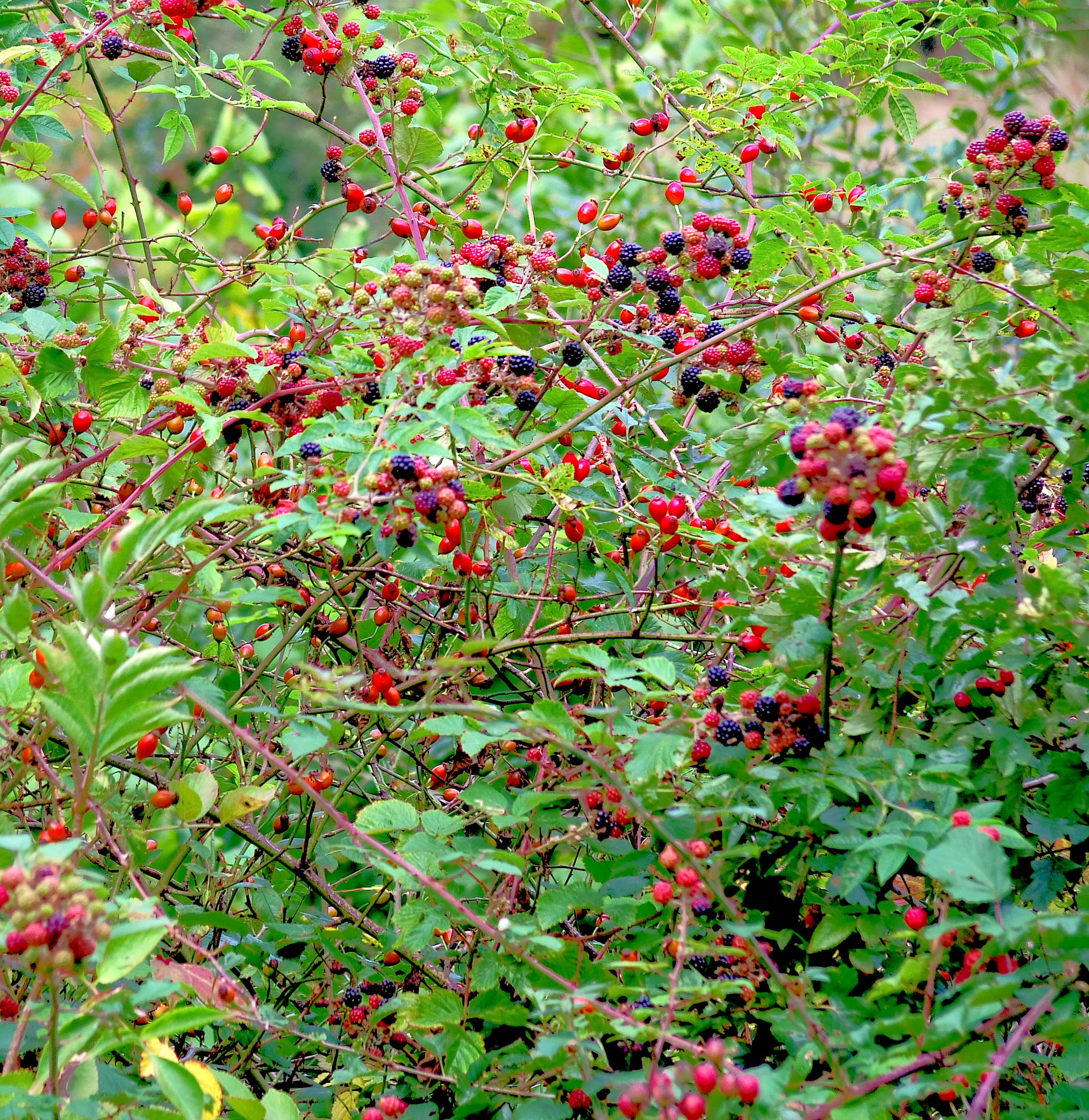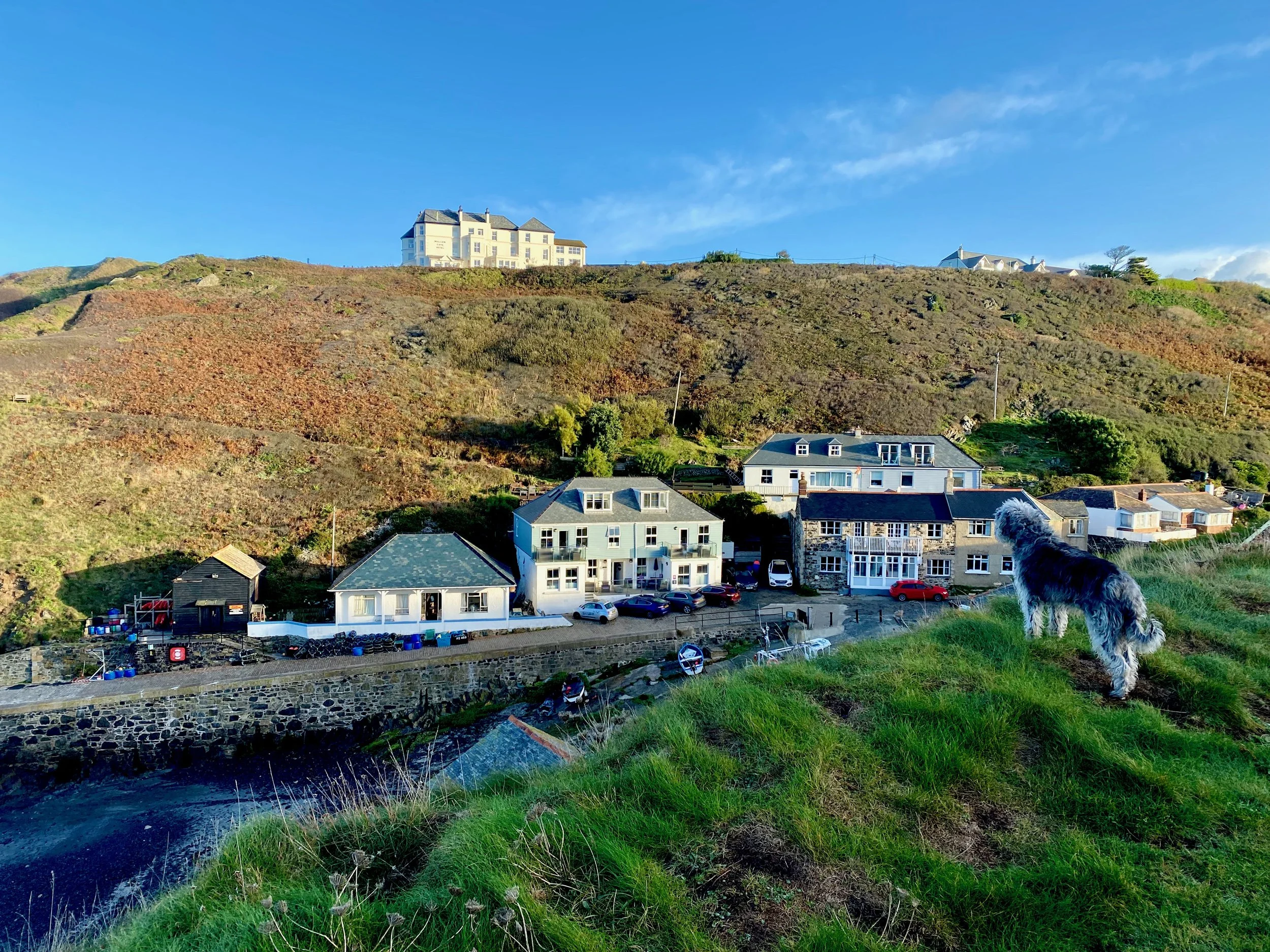Blackberry Time
Blackberries can be a hit-or-miss crop. Over the past week I’ve noticed a phenomenon regarding these delicious fruit that I’ve never seen before - by which I mean a height differential when it comes to which berries are ripening, and which are not.
The brambles in my part of the West Country seem to only have ripe blackberries right at the top of the bush - while those at reachable height are still little green bullets.
Why this should be I cannot imagine - unless it is something to do with the extremely hot weather we’ve been having in recent months.
It is not, by the way, because other people have been along and picked all the ripe berries at lower levels - not unless they’ve done so in the middle of the night. I keep a close eye on the brambles near my house and know that the one or two other folk in the valley who pick blackberries have not come along with their collecting trugs quite yet. Earlier I saw someone who had found an answer - the woman was reaching up with a special old fashioned kind of hay fork with bent tines and with the help of this fearsome looking implement she pulled down the fruitful thorn-covered limbs to a convenient height.
There are reckoned to be no fewer than 41 different species of bramble growing wild in the UK, and there seems to be a difference in opinion as to whether there is one true blackberry with many aberrant forms; or many distinct types. The name of the wicked, barbed and evil mother bush is derived from brambel, or brymbyl - signifying prickly. Brambles were first recorded in ancient Greece where blackberries were considered a remedy for gout.
The fruit has plenty of history in these islands - in some parts of England the blackberry was known as 'scaldhead,' though the reasons why the name came about are pretty diverse.
It could be to do with indigestible over-ripe berries causing a condition that used to be called scaldhead in children who ate too many. Or it could be derived from the curative effects that the leaves and berries have in treating this malady. It may even have come from the fact that the leaves were once applied to relieve scalds.
In Cornwall long ago crawling under a bramble-bush was thought to cause protection against all sorts of skin problems from boils to blackheads.
However, I much prefer thinking about more pleasing things to do with blackberries than worrying about what they may or may not cure. Jam-making must be top of the list - a good blackberry conserve will bring scented memories of late summer fields and hedges throughout the winter months.
Thinking of things to do with blackberries is always one of the pleasant challenges of September. Jam-making must come first, a good blackberry conserve will bring scented memories of late summer fields and hedges throughout the winter months.
West Country writer David Hill picks blackberries i his native Knowlestone
My own small problem with the succulent black orbs is how to turn them into a jam with a good firm body. Well, it's not really a problem, more of a niggling frustration and I bet many readers will have shared my chagrin. It occurs thanks to a somewhat tight-fisted reluctance to go out and buy a packet of pectin.
“The juice of a lemon will set the jam,” say various recipes. “Put in a chopped apple with its skin.”
But four times out of five this advice fails to set my ruby red preserve. Not that I mind too much because I use the runny stuff in cooking. A spoonful or two does wonders to any sauce that is about to accompany meat. Liquid blackberry jam also boosts a marinade with all the panache of port.
Blackberry and apple crumble is always a favourite with just about every West Country family I know, but my grandmother, who was a Somerset baker's daughter, used to treat us with the ultimate in 'comfort-food' puddings after she'd been out among the hedgerows at this time of year.
It was basically a Yorkshire pudding filled to the brim, spotted dick-style, with blackberries, dusted with castor sugar and eaten with clotted cream or ice cream.
Quantock Pudding
At least, that’s what I’m calling it…
3 ounces of plain flour
1 egg
3 fluid ounces of milk
2 fluid ounces of water – fizzy is best
a pinch of salt
sunflower oil
Whisk together all the ingredients expect for the oil which you put in a non-stick over dish and heat until it is spitting. Add the batter mix, watch it bubble and rise, scatter in the blackberries, put in a hot oven (200c) and cook for 25 to 30 minutes until fluffy, crisp and golden. Sieve castor sugar on top and serve with cream.









